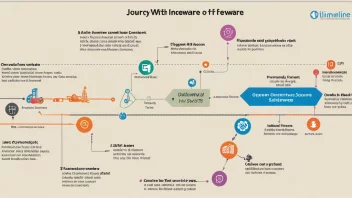Cryptographic hashing algorithms play a crucial role in ensuring data integrity, securing passwords, and enabling blockchain technology. As digital transformation accelerates, the need for secure, reliable methods of handling data becomes increasingly paramount. This article delves deep into the world of cryptographic hashing algorithms, exploring their mechanisms, applications, and significance in various domains.
What is a Cryptographic Hashing Algorithm?
A cryptographic hashing algorithm is a mathematical function that transforms an input (or 'message') into a fixed-size string of bytes. The output, typically referred to as the hash value or hash code, serves as a unique identifier for the input data. The key characteristics of cryptographic hashing algorithms include:
- Deterministic: The same input will always produce the same hash output.
- Fast computation: The hash value can be quickly computed for any given input.
- Pre-image resistance: Given a hash value, it should be computationally infeasible to retrieve the original input.
- Small changes induce significant changes: A slight modification in the input should produce a drastically different hash output.
- Collision resistance: It should be difficult to find two different inputs that produce the same hash output.
Common Cryptographic Hashing Algorithms
Several cryptographic hashing algorithms are widely used today, each with its strengths and weaknesses. Below are some of the most common:
1. MD5 (Message-Digest Algorithm 5)
Originally designed in 1991, MD5 produces a 128-bit hash value and is widely known for its speed. However, due to vulnerabilities that allow for collision attacks, its use is discouraged in favor of more secure alternatives.
2. SHA-1 (Secure Hash Algorithm 1)
SHA-1 generates a 160-bit hash and was once considered secure. However, vulnerabilities similar to those found in MD5 have been discovered, leading to its phased-out usage in favor of newer algorithms.
3. SHA-256 and SHA-3
Part of the SHA-2 family, SHA-256 produces a 256-bit hash and is widely used in various applications, including blockchain technology. SHA-3 is the latest member of the Secure Hash Algorithm family, offering enhanced security features.
Applications of Cryptographic Hashing Algorithms
Cryptographic hashing algorithms find applications in numerous fields, enhancing security and data integrity. Here are some of the primary use cases:
1. Data Integrity Verification
Hashing is essential for verifying the integrity of data. By comparing the hash of the original data with the hash of the received data, users can determine if any alterations have occurred during transmission or storage.
2. Password Storage
Storing passwords securely is critical for protecting user accounts. Instead of storing plain-text passwords, systems typically store the hash of passwords. When a user logs in, the system hashes the entered password and compares it to the stored hash.
3. Digital Signatures
Digital signatures use hashing to ensure the authenticity and integrity of messages. The sender hashes the message and encrypts the hash with their private key. The recipient can then verify the signature using the sender's public key.
4. Blockchain Technology
In blockchain, cryptographic hashing ensures the integrity of data blocks. Each block contains a hash of the previous block, creating a secure, immutable chain. This prevents tampering and ensures the reliability of transactions.
Implementing Cryptographic Hashing Algorithms
Implementing cryptographic hashing algorithms can vary depending on the programming language and the specific use case. Below are examples in Python and JavaScript.
Example in Python
import hashlib
# Define the input string
input_string = 'Hello, World!'
# Create a SHA-256 hash object
hash_object = hashlib.sha256()
# Update the hash object with the bytes of the input string
hash_object.update(input_string.encode())
# Get the hexadecimal representation of the hash
hash_hex = hash_object.hexdigest()
print(f'SHA-256 Hash: {hash_hex}')
Example in JavaScript
const crypto = require('crypto');
// Define the input string
const inputString = 'Hello, World!';
// Create a SHA-256 hash
const hash = crypto.createHash('sha256');
hash.update(inputString);
// Get the hexadecimal representation of the hash
const hashHex = hash.digest('hex');
console.log(`SHA-256 Hash: ${hashHex}`);
Case Studies: Cryptographic Hashing in Action
To better understand the importance of cryptographic hashing algorithms, let's explore a few case studies that illustrate their applications.
1. Blockchain and Bitcoin
Bitcoin utilizes SHA-256 hashing in its blockchain. Each transaction is hashed, and blocks of transactions are linked through their hash values, creating an immutable ledger. This design enhances security and prevents fraud, as altering any transaction would require changing all subsequent blocks.
2. Password Management Systems
Many password management systems employ bcrypt, a hashing algorithm specifically designed for password storage. Bcrypt incorporates a salt to protect against rainbow table attacks and is slow by design, making brute-force attacks less feasible.
3. Digital Certificates
Digital certificates utilize hashing to secure communications over the internet. When a user connects to a secure website, the SSL/TLS handshake involves hashing to verify the authenticity of the certificate, ensuring a secure connection.
Best Practices for Using Cryptographic Hashing Algorithms
To maximize the security provided by cryptographic hashing algorithms, consider the following best practices:
- Use Strong Hashing Algorithms: Opt for algorithms like SHA-256 or SHA-3, which are currently considered secure.
- Incorporate Salting: When hashing passwords, use a unique salt for each user to prevent pre-computed attacks.
- Implement Rate Limiting: Protect against brute-force attacks by limiting the number of attempts a user can make.
- Regularly Update Hashing Algorithms: Stay informed about vulnerabilities and update your hashing methods as needed.
Conclusion
Cryptographic hashing algorithms are foundational components of modern security, underpinning numerous applications that safeguard data integrity, secure passwords, and facilitate blockchain technology. Understanding their mechanisms, applications, and best practices is crucial for anyone involved in technology today. As the digital landscape evolves, the importance of robust hashing will only grow, making it essential for developers and organizations to prioritize secure practices in their systems.






